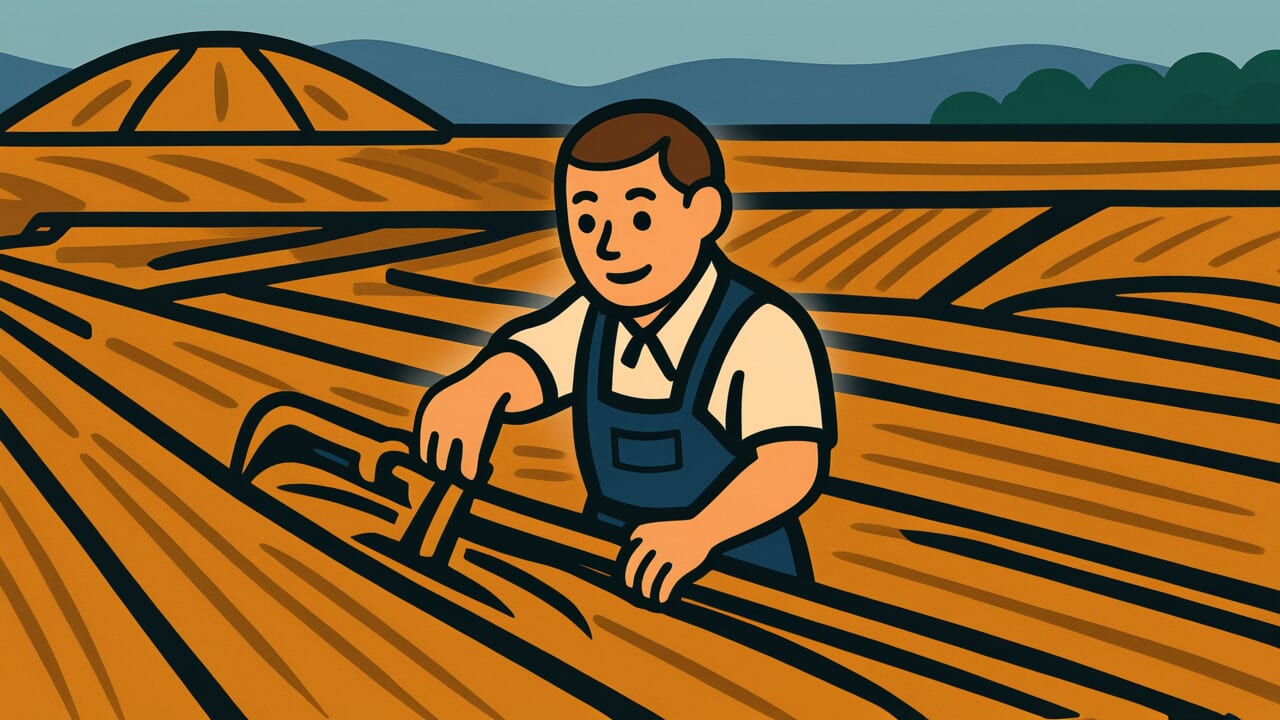How to Read “I’ll give the field and I’ll give the ridges too”
Ta mo yaro aze mo yaro
Meaning of “I’ll give the field and I’ll give the ridges too”
“I’ll give the field and I’ll give the ridges too” means you should do things thoroughly, not halfway.
This proverb teaches the importance of completing not just the main task, but also the small details that come with it.
By mentioning both plowing the rice field (the main work) and maintaining the ridges (the peripheral work), it shows that big things and small things are equally important.
Today, people use this saying when talking about doing a project carefully from start to finish.
This includes preparation, cleanup, and fine-tuning details. It also expresses determination to be thorough when you commit to something.
The proverb warns that halfhearted efforts won’t bring real results. It teaches the value of aiming for perfection.
Origin and Etymology
The exact first written appearance of this proverb is unclear. However, its structure reflects the work ethic of agricultural society.
“Ta” (field) refers to the rice paddies central to rice farming. “Aze” (ridges) are the raised earthen paths between fields.
In farm work, cultivating the paddies and managing water are obviously important. But maintaining the ridges was equally essential work that couldn’t be neglected.
If ridges collapsed, water would leak out and cause trouble for neighboring fields.
If weeds grew thick on them, they became breeding grounds for harmful insects. This could ruin the entire rice crop.
“Yaro” expresses intention, like saying “I’ll do it.” It has a Western Japan dialect feel.
In the region where this proverb originated, farmers may have called out to each other “Ta mo yaro, aze mo yaro” as a reminder about work attitude.
In agriculture, not just the prominent main tasks but also the humble, unnoticed peripheral work must be done properly.
This leads to abundant harvests. From this experience came the lesson that you should be thorough with details, not just the main parts.
This proverb shows the sincere attitude toward work that Japanese farming communities nurtured.
Usage Examples
- If we’re starting a new project, let’s follow the spirit of “I’ll give the field and I’ll give the ridges too” and do everything thoroughly from preparation to completion
- If we’re doing spring cleaning anyway, let’s go with “I’ll give the field and I’ll give the ridges too” and clean every corner thoroughly, not just the visible areas
Universal Wisdom
“I’ll give the field and I’ll give the ridges too” contains deep insight about the attitude needed to accomplish truly valuable things.
We humans tend to focus energy only on the prominent parts and neglect the humble ones.
Spectacular results catch everyone’s eye. But the detailed work supporting them often goes unnoticed.
Yet our ancestors learned through farm work that these “invisible parts” actually determine overall success or failure.
This proverb has been passed down for generations because it warns against a fundamental human weakness.
That weakness is the desire to “take it easy” and “cut corners.” We all want to minimize effort if possible.
But truly valuable things only exist beyond overcoming such temptations and following through completely.
This proverb also expresses humanity’s longing for “completeness.”
Halfway states leave something nagging at our hearts. They don’t bring satisfaction.
Only when we finish thoroughly can we feel deep fulfillment and pride. This is a truth about the human heart that never changes with time.
When AI Hears This
Ridges occupy only about 5 to 10 percent of a rice paddy’s total area.
But when these small boundary sections collapse, over 90 percent of the entire paddy becomes dysfunctional.
In other words, the impact on the whole system and the occupied area are completely reversed. This is a classic example of “boundary area underestimation bias.”
The same phenomenon occurs in software development.
Error handling and input validation make up only about 20 percent of total code. Yet roughly 80 percent of system failures originate from inadequacies in these boundary sections.
Human attention concentrates on core functions. Boundary parts get dismissed as “supplementary.”
Interestingly, this cognitive bias appears in budget allocation too.
In corporate capital investment, production equipment gets funding easily. But maintenance systems and safety devices face resistance.
In schools, class time is protected, but recess and cleaning time become targets for cuts. Both reflect undervaluation of boundary and maintenance functions.
Ridges are humble and inconspicuous. But they hold water, support soil, and create the very conditions for the rice paddy production system to exist.
A system’s value is determined not just by its center, but by the sum of center plus the boundaries that maintain it.
We need a perspective that judges importance by functional dependencies, not by area ratios or budget percentages.
Lessons for Today
What this proverb teaches modern people is a simple truth: real value comes from “seeing things through.”
Modern society emphasizes efficiency and speed. There’s a tendency to accept “good enough” as acceptable.
But work you can truly be proud of, and experiences that bring deep life satisfaction, only exist beyond following through completely.
The key isn’t demanding perfection in everything. It’s choosing not to compromise on what you truly consider important.
For projects you’re passionate about or relationships with people you care about, try approaching them with the spirit of “I’ll give the field and I’ll give the ridges too.”
Pay attention not just to the main parts but to the details. Don’t cut corners from preparation to completion.
This attitude will bring you greater results than expected and deep fulfillment.
One thing done thoroughly leaves a firmer footprint in your life than a hundred things done halfway.
Starting today, why not face what truly matters with your full commitment?



Comments